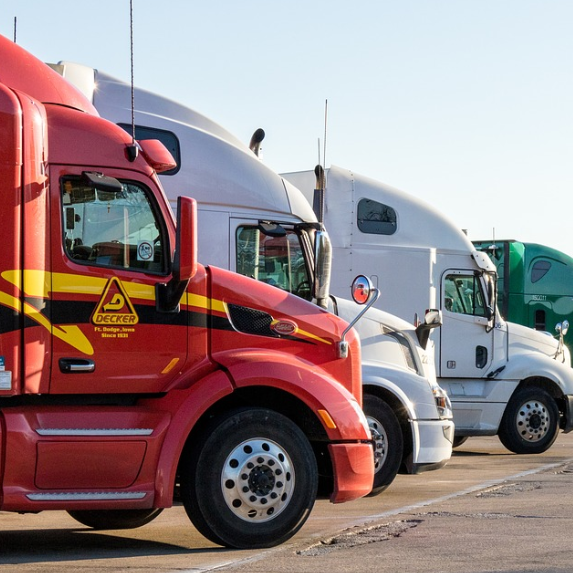
by logisticsplus | Jul 2, 2018 | News
 Less than truckload (LTL) shipping can be expensive and difficult if it’s not done efficiently. It’s important to understand the different ways you can save on LTL shipping in order to better manage your transportation expenses and maintain good relationships with your carriers. Here are four (4) tips to become more efficient and cost-effective with LTL shipping:
Less than truckload (LTL) shipping can be expensive and difficult if it’s not done efficiently. It’s important to understand the different ways you can save on LTL shipping in order to better manage your transportation expenses and maintain good relationships with your carriers. Here are four (4) tips to become more efficient and cost-effective with LTL shipping:
- Use Proper Packaging
- If a shipment is not properly packaged, you might be paying for extra shipping space you don’t really need. Also, an improperly packed shipment increases the risk of damages that may occur with the handling of your product. Its always important to recognize, and plan for, the things can go wrong, such as someone dropping your package. Furthermore, if you have a well-packaged shipment that is difficult to damage, it may save you the time of filing a tedious freight claim.
- Consolidate Units When Possible
- It is much easier for a carrier to handle one pallet that contains multiple units rather than handling a bunch of individual units. Not only does it make it easier for shipping purposes, but having one pallet with multiple units greatly decreases the risk of damages compared to shipping individual items.
- Always Report Accurate Shipping Weights and Dimemsions
- Always accurately state the weight and dimensions of your shipment whenever you have an LTL shipment. Although the shippers are responsible for correctly stating the weight, most carriers re-weigh all shipments. If the weight isn’t stated correctly, it can lead to additional charges that ramps up costs and decreases efficiency.
- Ensure Your Bill Of Lading Is Correct
- More LTL carriers are enforcing bill of lading accuracy. Many carriers even require the proper freight classification and NMFC item number. An inaccurate bill of lading can cause issues for carriers, straining the shipper and carrier relationship. A great way to increase bill of lading accuracy is to implement a transportation management system (TMS) that uses automation features to decrease the amount of errors made.
Less than truckload shipping doesn’t have to be such a difficult task. Following these tips will not only save you money, it will increase your efficiency. To find out how you can save on LTL shipping, contact Logistics Plus today for assistance. Our team of LTL experts will quickly show you how we put the “plus” in Logistics Plus.


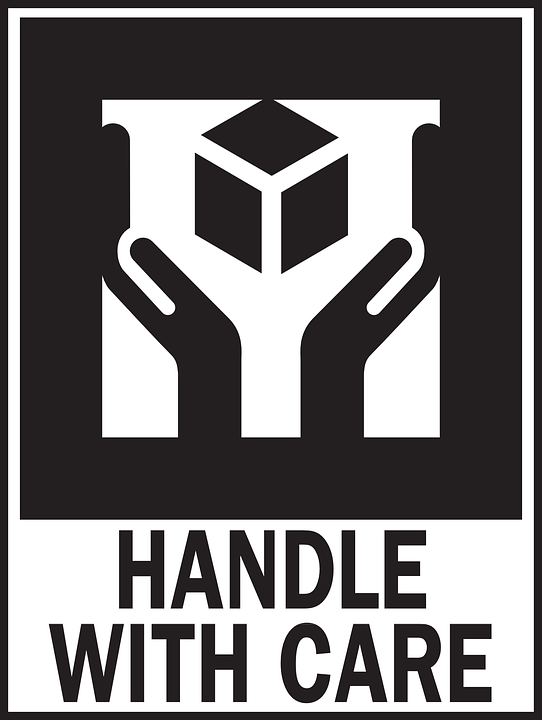
by logisticsplus | Jun 11, 2018 | News
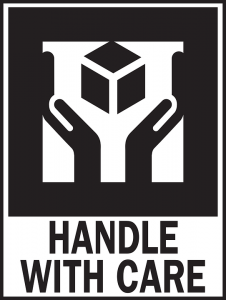 Learning how to correctly file a freight claim is important because it can save time and money for your company. A freight claim is a legal demand for the payment of money, stemming from the breach of a contract of carriage. Following strict guidelines and processes is the only way to correctly deal with these claims. Most importantly, there are four crucial elements to filing a freight claim:
Learning how to correctly file a freight claim is important because it can save time and money for your company. A freight claim is a legal demand for the payment of money, stemming from the breach of a contract of carriage. Following strict guidelines and processes is the only way to correctly deal with these claims. Most importantly, there are four crucial elements to filing a freight claim:
- The shipment needs to be identified so the carrier can complete an investigation.
- The type of loss or damage must be stated.
- The amount for the claim must be estimated.
- A demand for payment by the carrier must be included.
After making sure all four elements are clearly indicated, follow these tips and suggestions to ensure you correctly file your next freight claim:
- Take immediate action
- Taking immediate action is a crucial step of effectively filing a freight claim. Freight claims for loss or damage are generally governed by Title 49, CFR. Claimants must file the claim within the time limits specified in the bill of lading or contract of carriage. The time period cannot be more than 9 months from date of delivery or, if never delivered, the expected delivery date. Unless it’s otherwise agreed upon in a contract, a carrier must acknowledge receiving the claim within 30 days. The carrier must then pay, offer to compromise, or disallow the claim within 120 days or provide status reports every 60 days after. If the carrier fails to abide by these rules, it should be notified that it is violating the FMCSA claim regulations. Furthermore, if the damages are not noted on the delivery receipt at the time of delivery, you have only 5 days to alert the carrier of concealed damage. After these 5 days, the carrier can deny the claim due to the shipment being signed as clear.
- Attempt to mitigate the damages
- A responsibility that all parties of the shipping process share is attempting to mitigate damages. It is your responsibility to give a good faith effort to salvage damaged products unless you consider them to be totally or substantially useless and of no good.
- Have additional documentation available
- In order to make sure your freight claim is successful, always include supporting documentation. If it’s available, you should include the original bill of lading (BOL), the paid freight bill, inspection reports, notification of loss, copies of request for inspection, invoices, waivers, and other appropriate documents. Recently, some carriers have adopted picture policies, which require photographic documentation of all damages or else they will not process that claim. The more information you have regarding the freight, the more effective your claim will be.
- Create a detailed description of the losses or damages
- A detailed description of the loss or damage should be properly documented. The claimant should include the number of items damaged, the type of damage, the value of each unit, and the total claim amount. For example:
- 15 boxes of cell phones – (water damaged) @ $500 each: $7,500
- 5 boxes of cell phone cases – (crushed) @ $100 each: $500
- Total Damages: $8,000
- Amount Salvaged: $250
- Total Claim Amount: $7,750
If you frequently ship LTL freight or truckload shipments, freight losses and damages are almost inevitable, as is dealing with freight claims. That’s why it’s important to have an experienced and caring freight management partner working with you every step of the way. When you work with Logistics Plus, we’ll gladly assist you with the filing or processing of your freight claims, and we’ll assist you to find the carriers that best represent your interests. Contact us today to learn more.

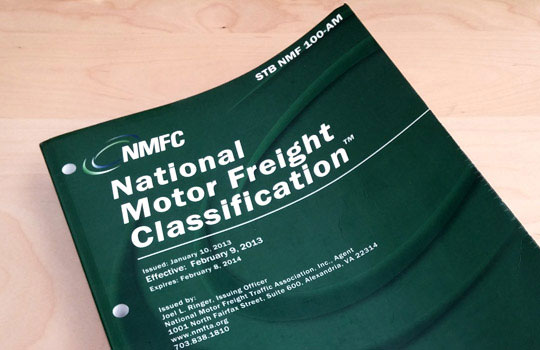
by logisticsplus | Apr 25, 2018 | News
 As a reminder, new National Motor Freight Classification (NMFC) freight classification changes will be going into effect this weekend on April 28, 2018. According to 2018-1 Public Docket files and a February 16, 2018 Notice of Disposition document the commodities affected include …
As a reminder, new National Motor Freight Classification (NMFC) freight classification changes will be going into effect this weekend on April 28, 2018. According to 2018-1 Public Docket files and a February 16, 2018 Notice of Disposition document the commodities affected include …
- Ink, Dry Ink or Toner
- Privacy Stalls or Partitions
- Compressors, refrigeration or air conditioning
- Coffee Makers or Coffee or Hot Water Urns
- Shower or Bathtub Doors, Enclosures or Enclosure Sections
- Cookware or Bakeware
- Computer Component Security
- Cars, Lift Trucks or Vehicles
- Borax (Sodium Borate)
- Body Parts, NOI, Pickup Truck Bed Storage Boxes or Organizers
- Tools, power, other than power hand tools
- Capsules, dosage, empty
- Air Cleaners or Air Filtering Machines
- Insoles
- Sweeteners, NOI, including Sugar Alcohols
- Birdseed or Bird Food,
- Games or Toys, NOI
- Ice Crushing or Ice Shaving Machines
- Fireplaces or Imitation Fireplaces, NOI, or Fireplace Inserts
- Chairs or Stools, NOI, including Theater Chairs or Seating
Please contact your Logistics Plus freight representative if you have any questions regarding the new rules.

by logisticsplus | Mar 9, 2018 | News
FOR IMMEDIATE RELEASE
Logistics Plus Recognizes 2017 LTL Carriers of the Year
Ward Transport & Logistics and Dayton Freight Jointly Awarded for Superior Performance in 2017
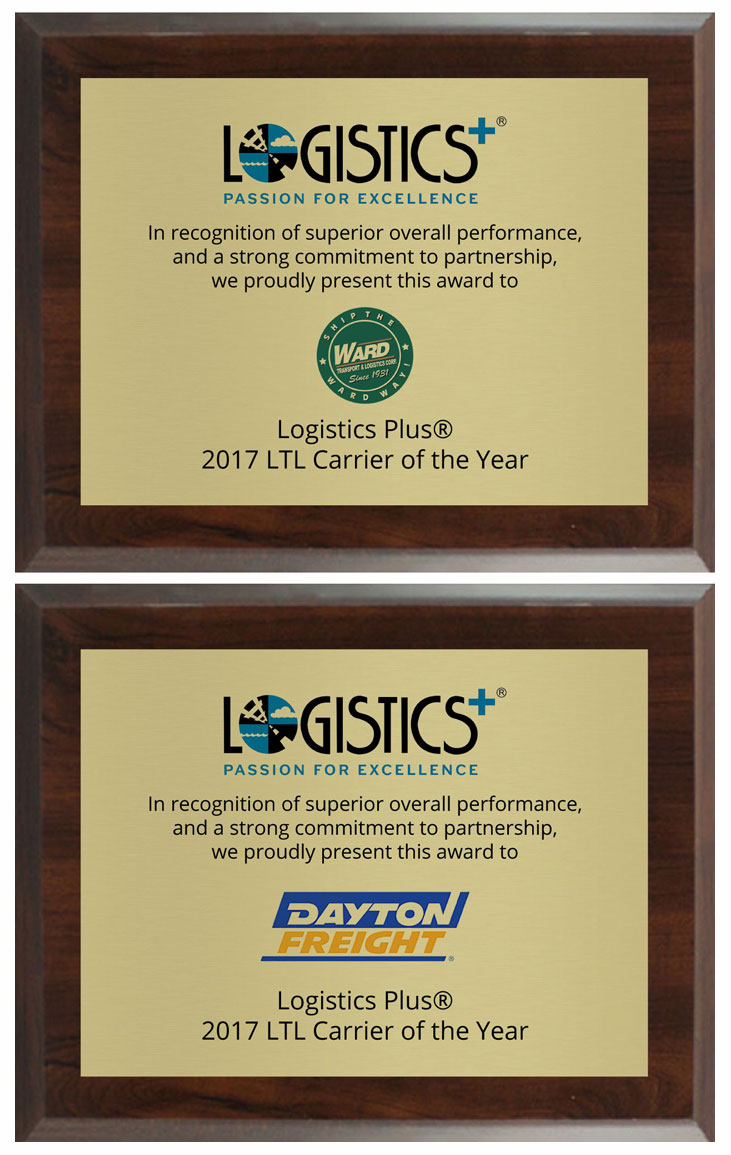 ERIE, PA (March 9, 2018) – Logistics Plus Inc., a leading worldwide provider of transportation, logistics and supply chain solutions, recently recognized two of its less-than-truckload (LTL) carriers – Ward Transport & Logistics and Dayton Freight – for superior results and performance in 2017.
ERIE, PA (March 9, 2018) – Logistics Plus Inc., a leading worldwide provider of transportation, logistics and supply chain solutions, recently recognized two of its less-than-truckload (LTL) carriers – Ward Transport & Logistics and Dayton Freight – for superior results and performance in 2017.
Logistics Plus, a top North American freight brokerage firm, delivers LTL services through its proprietary eShipPlus™ transportation management system (TMS) – an online platform made available to all of its LTL customers and select freight agents. Its annual LTL carrier awards are based on an internal and external assessment of the following performance criteria:
- Annual Share of Business and Growth
- Price Competitiveness
- Service Performance
- Billing Accuracy
- Customer Service
- Account Representation
For 2017, both Ward Transport & Logistics and Dayton Freight had equal overall scores across all performance criteria. As a result, both companies were recently honored as LTL Carriers of the Year by Logistics Plus. This marks the second consecutive year Dayton Freight has received LTL carrier of the year honors from the Logistics Plus staff and its customers, and the first for Ward Transport & Logistics.
“As a global 3PL, Logistics Plus provides a wide variety of diversified solutions; however, LTL freight management was one the company’s first services, and it remains a core offering for us today,” said Scott Frederick, vice president of marketing and LTL carrier relations for Logistics Plus. “Having high-performing LTL carrier partners is critical to our LTL services program. Based on our assessment of 2017 performance, Ward and Dayton both came out on top. I am grateful for the support we receive from all of our LTL carrier partners, but I would especially like to thank and congratulate Ward and Dayton for their excellent service in 2017.”
About Ward Transport & Logistics
In 1931, William W. Ward started the company with 1 truck and 2 employees. Headquartered in Altoona, PA, today Ward Transport & Logistics is four generations deep and has grown to a fleet of 600 trucks handling over 5,000 shipments a day to over 10,000 customers. Ward has grown into the most responsive, reliable transportation network in the Northeast/Mid-Atlantic regions, with additional coverage through the Ward Extended Network.
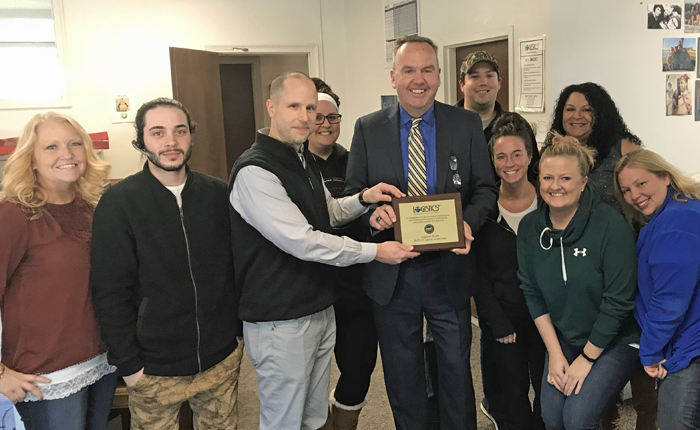
The Logistics Plus LTL operations team presents Steve Clagg, corporate account executive for Ward Transport & Logistics, with a 2017 LTL Carrier of the Year Award.

About Dayton Freight Lines
Founded in 1981, Dayton Freight is a private LTL freight carrier headquartered in Dayton, Ohio. With 54 Service Centers in the Midwest region, Dayton Freight offers shippers 1 or 2 day service to thousands of points throughout a 13 state area. With its Strategic Alliance Network, it can also serve all of the United States, Canada, Mexico, Puerto Rico and Guam.

The Logistics Plus LTL operations team presents Patty Ash, corporate account manager for Dayton Freight, with a 2017 LTL Carrier of the Year Award.

About Logistics Plus Inc.
Logistics Plus Inc. provides freight transportation, warehousing, fulfillment, global logistics, and supply chain management solutions through a worldwide network of talented and caring professionals. Founded in Erie, PA by local entrepreneur, Jim Berlin, 21 years ago, Logistics Plus is a fast-growing and award-winning transportation and logistics company. With a strong passion for excellence, its 450+ employees put the “Plus” in logistics by doing the big things properly, and the countless little things, that together ensure complete customer satisfaction and success.
The Logistics Plus® network includes offices located in Erie, PA; Little Rock, AR; Los Angeles, CA; Riverside, CA; San Diego, CA; San Francisco, CA; Visalia, CA; Atlanta, GA; Chicago, IL; Detroit, MI; Lexington, NC; Buffalo, NY; New York, NY; Olean, NY; Akron, OH; Cleveland, OH; Charleston, SC; Nashville, TN; Dallas, TX; Fort Worth, TX; Houston, TX; Laredo, TX; Winchester, VA; Madison, WI; Australia; Bahrain; Belgium; Brazil; Canada; Chile; China; Colombia; Czech Republic; Egypt; France; Germany; Hong Kong; India; Indonesia; Kazakhstan; Kenya; Libya; Mexico; Netherlands; Poland; Saudi Arabia; Singapore; South Sudan; Taiwan; Turkey; UAE; Uganda; and United Kingdom; with additional agents around the world. For more information, visit www.logisticsplus.com or follow @LogisticsPlus on Twitter.
Media Contact:
Scott G. Frederick
Vice President, Marketing
Logistics Plus Inc.
(814) 240-6881
scott.frederick@logisticsplus.com
Click image below to download the Logistics Plus logo:


by Marketing | Jan 24, 2018 | News

What are ELD’s?
For anyone not familiar with the term, ELD is short for electronic logging device. This tool is used to document a driver’s Record of Duty Status (RODS). Before ELD’s came about, drivers had to manually enter their hours of service into a paper logbook. Although some individuals still utilize this method, ELD’s were created with the intent to be easily accessible, organized and a fast way to track, manage, and share RODS information. The device is able to connect with a truck’s engine, which transfers driving time directly to the ELD, making it easier and accurate for drivers when having to log their hours of service requirements.
The ELD Mandate
About six years ago, in 2012, the U.S. Congress passed the MAP-21 bill, otherwise known as “Moving Ahead for Progress in the 21st Century.” This law requires drivers to have an ELD installed in their vehicle, replacing the previous manual logging method. The mandate was put into action in December of 2017, but drivers have until April of 2018 before the FMCSA (Federal Motor Carrier Safety Administration) requires them (inspectors will issue citations before April 1; after that date, out-of-service orders will be given to truckers that are non-compliant).
Impact on Truck Capacity
The new ELD Mandate has raised issues concerning trucking capacity and much more. Although truck operators have known about this for a while, many have yet to install the electronic tracking device or find an authorized vendor, not to mention it is a lengthy process.
Based on FMCSA guidelines, the HOS rules are as follows:
- Truckers have an 11-hour driving limit (only holds true if the driver has 10 consecutive hours off duty)
- Drivers have a 14-hour absolute driving limit for driving after coming on duty (following 10 consecutive hours of off-duty)
- Drivers must take breaks (may only drive if 8 hours or less have passed since the end of the drivers last off-duty)
- Specification of how many hours a driver may work within an 8-day period
- No more than 60 hours when driving 7 consecutive days in the same period
- No more than 70 hours when driving 8 consecutive days in the same period
- Restarts when the driver takes 34 + hours off duty
These new regulations hold strict limitations on the number of trips and hours drivers can complete in a given time frame. They also have drivers questioning what this means in terms of trucking capacity. Will truck drivers be able to fulfill their daily driving schedule? Will this decrease a carrier’s or operator’s profitability? As truckers are faced with increased costs and limited driving time, how much of these increased costs will be passed on to shippers?
Many media outlets are already reporting significant capacity constraints and rate increases across both the truckload and LTL segments. In fact, some truckload freight may be shifting to LTL in certain lanes as capacity has tightened and as truckload spot-market rates have increased. The TIA’s (Transportation Intermediary Association) data is also showing the impact of rising spot market truckload rates, which grew by double-digits year over year in the fourth quarter of 2017.
Although 3PLs are not immune to rate increases and capacity crunches, they are often in a better position to help customers find affordable solutions through their effective use of technology and their expansive carrier relationships.
There is no doubt that the ELD mandate will cause less trucking capacity, but in the long term, it will increase efficiency and productivity for users who implement it. Since the large fleet operators have implemented ELD’s years ago, they have an advantage over the smaller fleet and independent operators who have delayed ELD implementation. However, Logistics Plus is accomplished in finding the best logistic solutions to a shipper’s needs.
ELDs, new visibility tools, and automated enhancements will continue to change the transportation and logistics industry on every front. As costs are permanently reduced and efficiencies realized, the trucking industry may eventually see a prolonged period of price declines. However, that time horizon is at least a few years away. In the meantime, if you need a trusted logistics partner to help you find affordable truck capacity, Logistics Plus is ready to help.


 Less than truckload (LTL) shipping can be expensive and difficult if it’s not done efficiently. It’s important to understand the different ways you can save on LTL shipping in order to better manage your transportation expenses and maintain good relationships with your carriers. Here are four (4) tips to become more efficient and cost-effective with LTL shipping:
Less than truckload (LTL) shipping can be expensive and difficult if it’s not done efficiently. It’s important to understand the different ways you can save on LTL shipping in order to better manage your transportation expenses and maintain good relationships with your carriers. Here are four (4) tips to become more efficient and cost-effective with LTL shipping:



 Learning how to correctly file a freight claim is important because it can save time and money for your company. A freight claim is a legal demand for the payment of money, stemming from the breach of a contract of carriage. Following strict guidelines and processes is the only way to correctly deal with these claims. Most importantly, there are four crucial elements to filing a
Learning how to correctly file a freight claim is important because it can save time and money for your company. A freight claim is a legal demand for the payment of money, stemming from the breach of a contract of carriage. Following strict guidelines and processes is the only way to correctly deal with these claims. Most importantly, there are four crucial elements to filing a 

 ERIE, PA (March 9, 2018) – Logistics Plus Inc., a leading worldwide provider of transportation, logistics and supply chain solutions, recently recognized two of its less-than-truckload (LTL) carriers – Ward Transport & Logistics and Dayton Freight – for superior results and performance in 2017.
ERIE, PA (March 9, 2018) – Logistics Plus Inc., a leading worldwide provider of transportation, logistics and supply chain solutions, recently recognized two of its less-than-truckload (LTL) carriers – Ward Transport & Logistics and Dayton Freight – for superior results and performance in 2017.




